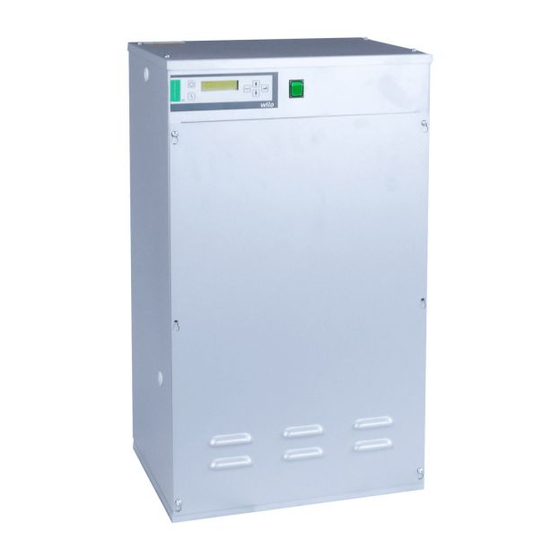
Summarization of Contents
Installation
Location
Site considerations for pump set positioning, including ventilation and access.
Foundations
Requirements for stable and level foundations, avoiding distortion.
Pipework
Guidelines for pipework connections, matching set sizes.
Impurities
Water quality requirements and the need for filters on dirty water.
Electrical Connections
Checks for compatible supply voltage, frequency, and earth bonding.
Water Connections
Connecting wholesome water supply and system filling procedures.
Operation
General
How units work on closed loop pressure control and pump rotation.
Factory Settings
Default parameters for pressure, alarms, and system fill.
Auto Restart
Unit behavior after power failure or mains interruption.
Low Water
Float switch activation and alarm for low break tank water level.
Low Pressure (LP)
LP alarm activation and reset conditions when pressure drops.
High Pressure (HP)
HP alarm activation and reset conditions when pressure rises.
Excess Starts (ES)
Alarm for frequent pump starts within a set time period.
System Fill (SF)
Function for initial system fill or leak management over 24 hours.
Pump Trip
Alarm for excessive pump current draw, stopping the pump.
Pump Fail
Alarm for zero pump current draw, stopping the pump.
Pump Check
Automatic operation check for inactive pumps.
Alarm Latching
Configuration for manual or automatic alarm reset.
Alarm Log
Viewing the last 30 alarm events.
Volt free contacts
Facility for remote monitoring via volt-free contacts.
Pre-Commissioning Checks
Commissioning
Steps for setting up and verifying the unit, including pressure calculations.
Maintenance
Every 6 months
Routine checks for leaks and corrosion, especially on the vessel.
Every 12 months
Detailed checks including vessel, valves, and shaft rotation.












Need help?
Do you have a question about the P135 and is the answer not in the manual?
Questions and answers